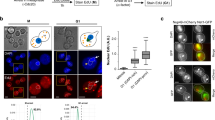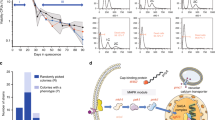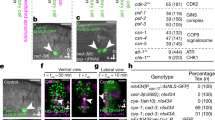Abstract
IT was reported earlier that in a strain of Tetrahymena pyriformis grown in this laboratory the lethal effect of ultra-violet light could be photo-reactivated even after the irradiated individuals had divided once or twice1. There are several ways in which this phenomenon might be used to elucidate the lethal action of ultra-violet light. Many preliminary enquiries could be made; but it is particularly desirable to determine whether the observed response is a general characteristic or a special trait of the particular species and strain used.
This is a preview of subscription content, access via your institution
Access options
Subscribe to this journal
Receive 51 print issues and online access
$199.00 per year
only $3.90 per issue
Buy this article
- Purchase on Springer Link
- Instant access to full article PDF
Prices may be subject to local taxes which are calculated during checkout
Similar content being viewed by others
References
Calkins, J., Nature, 196, 686 (1962).
Calkins, J., Ph.D. thesis, Univ. Texas (1963).
Author information
Authors and Affiliations
Rights and permissions
About this article
Cite this article
CALKINS, J. Photo-reactivation after Division II. Nature 200, 484–485 (1963). https://doi.org/10.1038/200484b0
Issue Date:
DOI: https://doi.org/10.1038/200484b0
This article is cited by
Comments
By submitting a comment you agree to abide by our Terms and Community Guidelines. If you find something abusive or that does not comply with our terms or guidelines please flag it as inappropriate.



